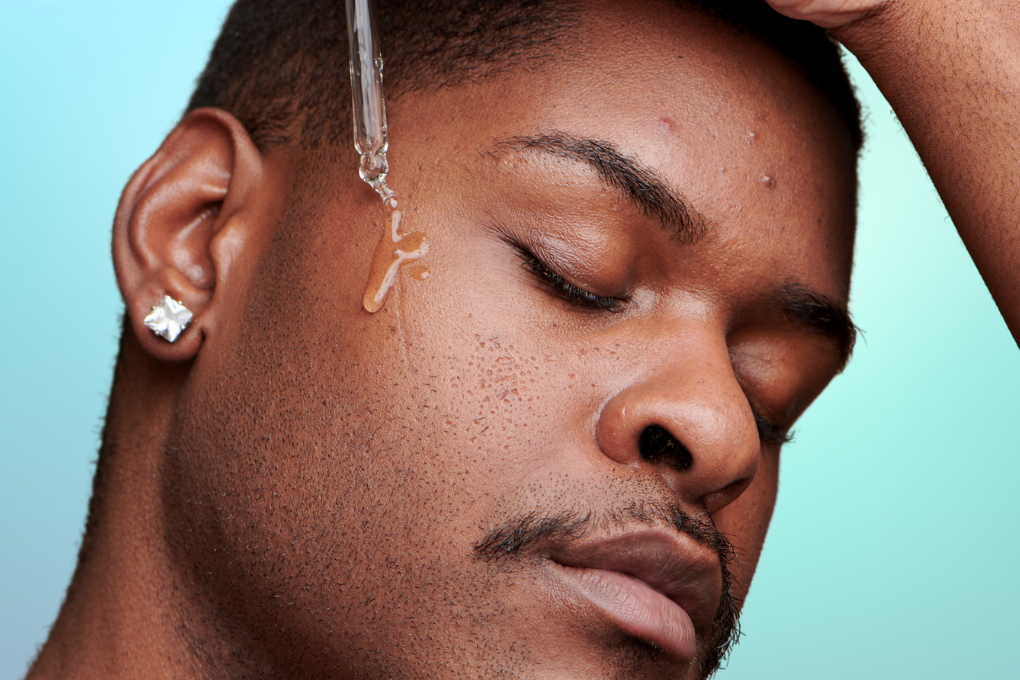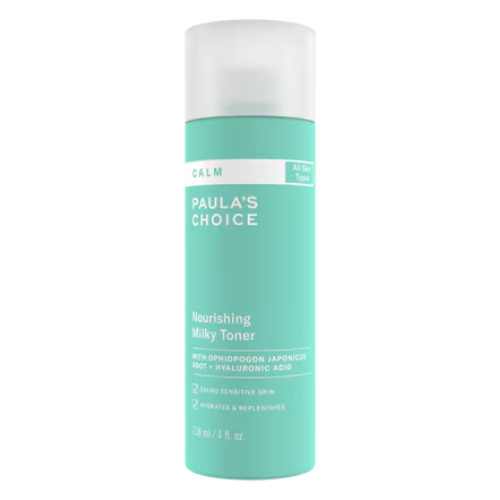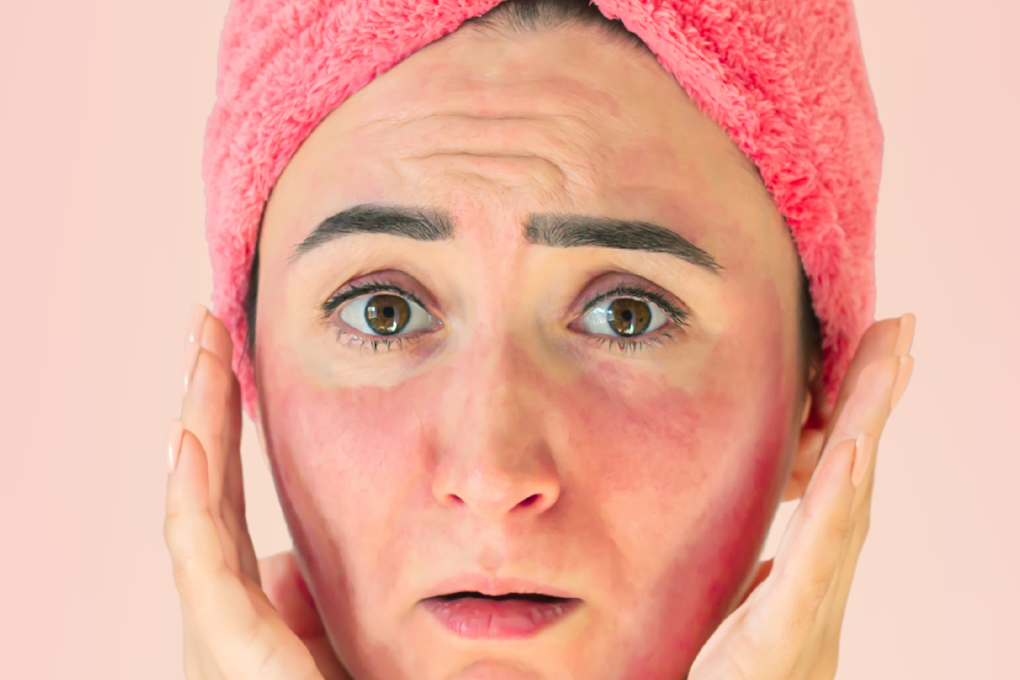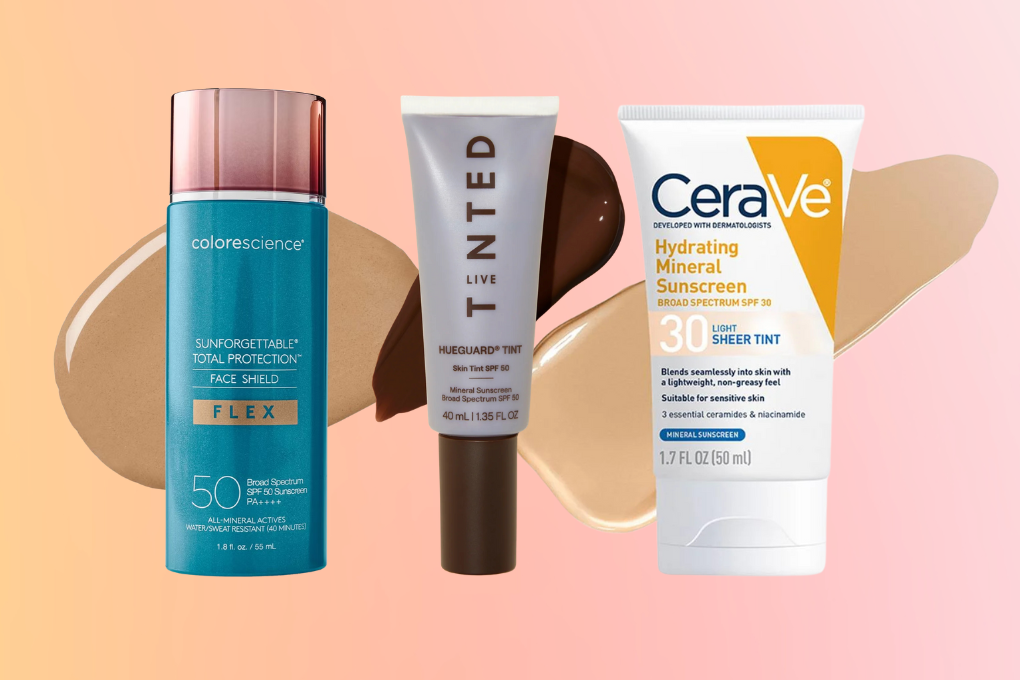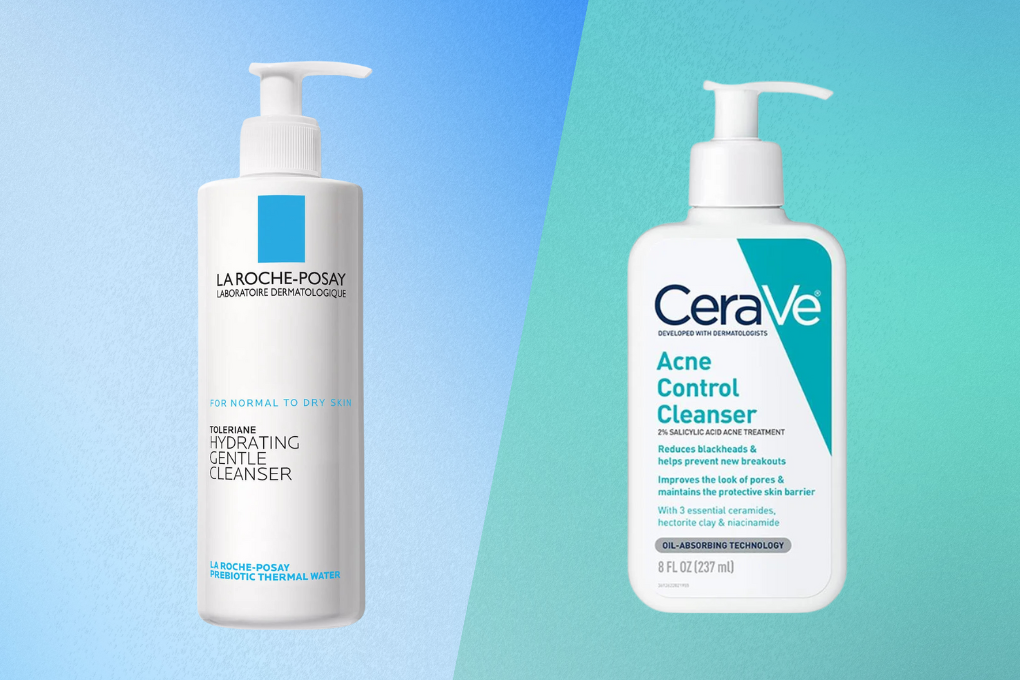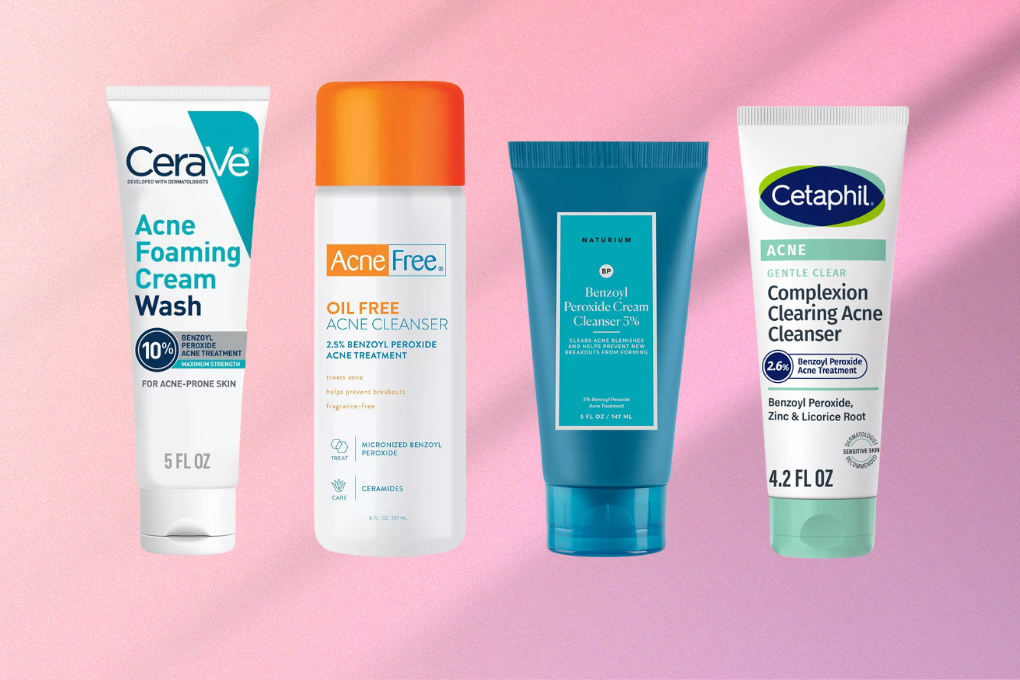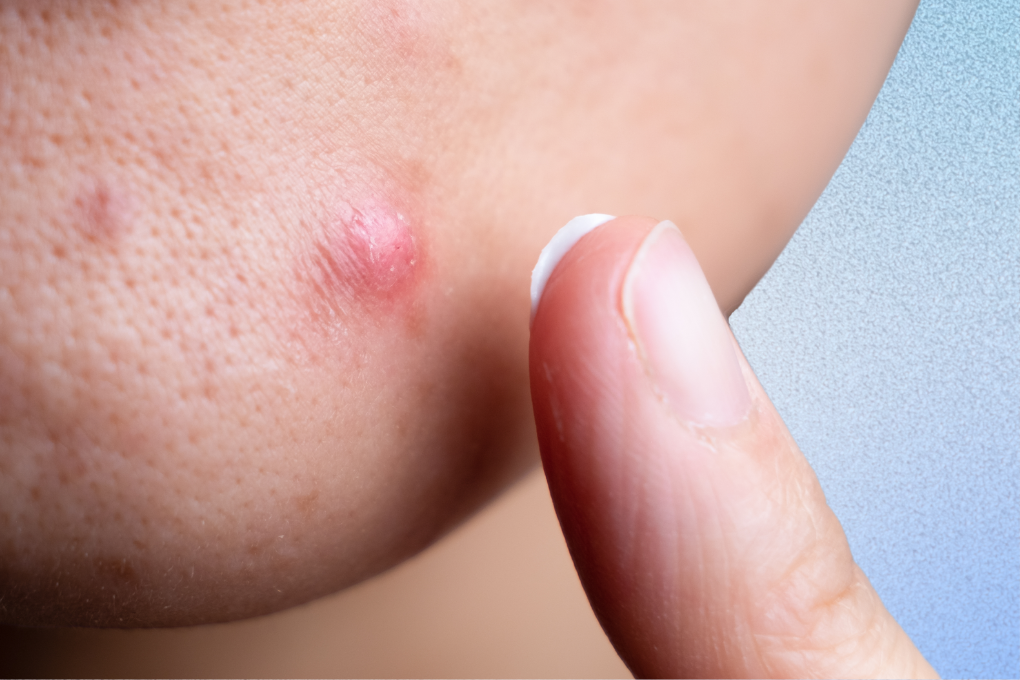Is your skin both acne-prone and in desperate need of hydration? Skin flooding, a skincare trend on social media, may be the perfect choice to deeply hydrate your skin without clogging your pores.
What is Skin Flooding?
Skin flooding is a skincare technique where you apply several lightweight layers of moisturizing products on damp skin. The goal is to “flood” the skin with hydration and lock it in with a moisturizer. This method can be particularly beneficial if you have dry or dehydrated skin, but it can also be a useful way of keeping oily skin in good condition without adding rich products.
Skin flooding emphasizes layering products while the skin is still damp from each previous step, which can help maximize hydration absorption. Spraying your skin between each step with a can of thermal water or tap water in a mister bottle can help maintain moisture during your routine.
Skin Flooding Routine
To practice skin flooding, apply your products to wet skin, starting with the thinnest, water-based products, and move towards thicker serums and creamier textures so each layer can be fully absorbed. You can use a spray of thermal water between steps and apply each product with gentle patting motions to enhance absorption.
While skin flooding can be beneficial for acne-prone skin, it’s important to select the right products. Look for lightweight products with hydrating ingredients such as hyaluronic acid and glycerin when skin flooding, and avoid heavy creams or oils that can clog pores.
Cleanser
Start by cleaning your face to ensure that your skin can fully absorb the hydrating products more effectively. Use a gentle, hydrating cleanser that won’t strip your skin, or a mild cleanser with active ingredients such as benzoyl peroxide and salicylic acid if your skin tolerates it. Leave your skin damp or follow with a thermal water spray to hydrate for the next step.
EltaMD Skin Recovery Amino Acid Foaming Gentle Face Cleanser for Sensitive Skin
The Skin Recovery Amino Acid Foaming Cleanser from EltaMD is made to strengthen the skin barrier while mild surfactants gently remove makeup, sunscreen, excess oil, and other impurities. The self-foaming dispenser simplifies the cleansing process, and one cloudlike puff is enough to clean your face. The brand's AAComplex of three amino acids helps restore the skin barrier and reduce skin water loss, while bisabolol and ginger bring down redness and irritation.
- Instant luxurious foam
- Amino acid complex strengthens skin barrier
- Bisabolol and ginger extract help reduce redness
- Expensive for the size
Bioderma Sensibio Soothing Micellar Cleansing and Makeup Removing Foaming Gel for Sensitive Skin
This cleansing gel from French brand Bioderma's Sensibio line for sensitive skin uses micellar technology to gently cleanse and remove makeup. These cleansing microdroplets, or micelles, can capture oil and impurities without stripping, making this cleanser an excellent option for anyone with sensitive skin. It also uses Bioderma's patented D.A.F. complex, which works on all skin types to help improve the skin's tolerance threshold.
- Micelles gently cleanse and remove makeup
- Non-stripping for sensitive skin
- D.A.F. complex to increase skin tolerance
- More expensive than other options
Eau Thermale Avene Thermal Spring Water Facial Mist Spray
Thermal Spring Water Spray from French brand Avene is the best-known and best-loved mineral spray for good reason. It contains pure Avene spring water, known for its postbiotic microflora that supports the skin's microbiome and its optimal mineral content to soothe skin. The spray is bottled directly at the source, and it is released in an ultra-fine mist that can be used for lightly dampening the skin between skincare steps to add hydration, setting makeup, or just a refreshing moment.
- Ultra fine mist to lightly dampen skin
- Naturally occurring minerals soothe
- Expensive
Toner or Essence
Applying a hydrating toner to damp skin will begin the hydration process, balance your skin’s pH, and enhance the absorption of your other products.
An essence can be used in addition to, or interchangeably with, a hydrating toner. Originally popularized in Korea, an essence is a lightweight liquid rich in hydrating ingredients.
Paula's Choice Skin Balancing Pore-Reducing Toner with Ceramides, Chamomile, and 1% Niacinamide
The Pore Reducing Toner from Paula's Choice is a hydrating toner made for oily or combination skin types to balance the skin and minimize pores. It uses antioxidants, plant extracts such as chamomile and burdock, to soothe and defend from environmental stressors. Niacinamide helps even skin tone and reduce the appearance of pores, while ceramides and cholesterol help reinforce the skin's barrier to better retain moisture.
- Hydrates and balances oily skin
- Niacinamide minimizes pores
- Cholesterol and ceramides strengthen skin barrier
- Niacinamide may be irritating for some people
Paula's Choice CALM Nourishing Milky Toner for Sensitive Skin and Redness
Paula's Choice Nourishing Milky Toner from their Calm line of products is full of skin-replenishing ingredients and antioxidants to soothe redness and sensitivity by supporting the skin barrier. Hyaluronic acid and glycerin hydrate the skin, while allantoin, panthenol, and marshmallow root extract help reduce redness and calm the skin. This toner is designed to strengthen the skin barrier to prevent future sensitivity, making it an excellent choice if your skin is irritated from harsh acne treatments.
- Gentle for sensitive and rosacea-prone skin
- Strengthens skin damaged from acne treatments
- Supports skin barrier to prevent future sensitivity
- Expensive for the size
NEOGEN Real Ferment Micro Essence with 93% Naturally Fermented Ingredients
The Real Ferment Micro Essence from Korean skincare brand Neogen is made of naturally fermented ingredients to hydrate and soothe skin. These fermented ingredients, such as bifida ferment lysate and rice ferment filtrate, are popular in Korean skincare and are known to deeply hydrate and plump the skin. Niacinamide brightens the skin tone, and amino acids help to repair the skin barrier. Birch tree juice, another popular Korean skincare ingredient, provides antioxidant support.
- Natural ferments hydrate and plump the skin
- Amino acids support skin barrier
- Birch tree juice has antioxidant benefits
- Expensive
- Niacinamide may be irritating for some people
Serum
A serum is a highly concentrated formulation designed to deliver potent ingredients directly into the skin. They are used before moisturizing, serving as an important step in skincare routines for those seeking targeted results. Look for a hydrating serum with ingredients like hyaluronic acid, glycerin, or panthenol, which are all humectants, meaning they attract and hold moisture in the skin.
Paula's Choice Hyaluronic Acid Booster Serum with Ceramides
The Hyaluronic Acid Booster from Paula's Choice is a concentrated serum that deeply hydrates and moisturizes skin. This liquid gel formula is designed to either be used alone or added to a moisturizer or another serum to simplify your routine. Glycerin, hyaluronic acid, and panthenol attract moisture and plump the skin, while ceramides and cholesterol strengthen the skin's barrier to retain the hydration. While expensive, this is a great choice for dehydrated skin that needs a little boost.
- Concentrated serum
- Deeply hydrates and plumps
- Ceramides and cholesterol support skin barrier
- Expensive for small size
Moisturizer
The last step of skin flooding is to apply a moisturizer to lock in all of this hydration and protect the skin barrier. Unlike other hydrating products, moisturizers usually have occlusive properties, meaning they form a protective barrier on your skin’s surface to prevent transepidermal water loss, which is the evaporation of water from the skin’s surface into the surrounding air. Choose a formulation that can seal in the hydration without clogging your pores, such as a lightweight moisturizer or a gel moisturizer.
EltaMD Skin Recovery Lightweight Moisturizer for Damaged Skin Barrier with Amino Acids
Elta MD's Skin Recovery Light Moisturizer is a weightless lotion designed with acne-prone and sensitive skin in mind. It uses the brand's patented AAComplex of amino acids to restore the skin's natural barrier, which makes it one of our favorite moisturizers to use alongside a strong acne treatment. With hyaluronic acid, glycerin, squalane, and coconut extract, this lotion soothes and moisturizes dehydrated skin while calming irritation and redness.
- Lightweight with hydrating ingredients
- AAComplex restores skin barrier
- Great option when using harsh acne treatments
- Expensive
Skin Flooding for Acne
Contrary to popular belief, acne-prone skin can be dry as well as oily, and sometimes we can dehydrate oily skin through harsh acne treatments. Adding moisture back to the skin without causing breakouts can be a tricky balance, as many rich and heavy creams that soothe our skin can also clog our pores.
Skin flooding can be a great way to hydrate acne-prone skin, particularly when it has been sensitized by too many active ingredients, and craves moisture.
Here are six ways that skin flooding can be beneficial if you are acne-prone:
1. Balances Sebum Production
Dehydrated skin can trigger an overproduction of oil (sebum) as a response to a lack of moisture, potentially leading to clogged pores and acne. By deeply hydrating your skin, skin flooding can help to regulate sebum production, reducing the likelihood of more pimples.
2. Reduces Inflammation
Acne-prone skin typically suffers from inflammation. Hydrating ingredients used in skin flooding often have anti-inflammatory properties that can help soothe and calm inflamed skin, reducing redness and discomfort associated with acne.
3. Strengthens Skin Barrier
A damaged skin barrier can lead to various skin issues, including acne, but it can be hard to find barrier repair products that are safe for acne-prone skin. Layering hydrating products can help strengthen your skin’s protective barrier, preventing environmental irritants and bacteria (which can exacerbate acne) from entering your skin.
4. Promotes Healing
Hydrated skin heals faster than dehydrated skin. By ensuring the skin is adequately moisturized, skin flooding can aid in the quicker healing of existing acne while also reducing the chances of scarring.
5. Supports Retinoid Use
You can also use skin flooding to help support skin when it’s going through the retinol uglies by using lightweight hydrating products before your retinoid to help “buffer” your skin and prevent irritation.
6. Acne-Safe Skincare Trend
One of the smaller difficulties of dealing with acne is not being able to use many of the skincare products and trends that you see on social media (we’re looking at you, slugging). If you have felt left behind by #SkinTok, then embrace skin flooding as a trend you can safely enjoy with acne-prone skin.
Skin flooding is an approach to hydration that can be easily adapted to acne-prone skin. By layering lightweight hydrating products on damp skin, you can give your face a thorough drenching of moisture without it feeling smothered. By locking in moisture, you’re also fortifying your skin’s natural protective barrier, creating an environment that’s less hospitable to acne-causing bacteria while soothing irritated and inflamed skin.





